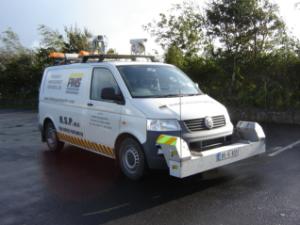Asset Management - Pavements
TII maintains and develops road assets, including pavements, which vary across a 5,300km network of National Primary and Secondary routes. These flexible pavements are designed to endure traffic loads for 20–40 years, providing skid resistance, ride quality, noise control, and environmental durability.
Pavements differ in construction, age, width, design, and traffic levels, with many originating from historic routes. Our 5,400km road network naturally deteriorates over time, requiring substantial funding to maintain it despite increasing traffic loads and environmental impacts.
Pavement Deterioration & Maintenance
All pavements deteriorate due to traffic and environmental factors, exhibiting distress like:
- Wheel track rutting
- Increasing roughness
- Cracking
- Loss of skid resistance
A Pavement Management System (PMS) models these symptoms, predicting deterioration rates. Maintenance prioritises:
- Keeping the network operational.
- Minimizing delays for users.
- Preserving asset value through annual and multi-year rehabilitation programs.
Pavement Management System
TII's Pavement Management System has been specifically developed for our network by Mouchel/Viagroup, and is based on a system developed in Canada by Deighton since 1983. This system (dTIMS) is used by road authorities in all 5 continents and its use allows enhanced decision-making and management of the network assets using multi-year performance, financial and economic analysis. As we gather more data each year the information available to the system is extended and the resultant prediction models are further refined and adjusted to reflect actual records.
The collection of the data and interrogation of the results is a continuous activity which can be summarised diagrammatically:

Pavement Condition Surveys
Annual pavement surveys employ specialized vehicles with electronic, laser, and video equipment, assessing:
-
Longitudinal profile/roughness
-
Rutting
-
Skid resistance
-
Traffic impacts
This geo-referenced data is stored in the Pavement Management System to track deterioration and prioritize interventions.
Road Surface Profiler (RSP) & SCRIM

The RSP machine collects:
- GPS data
- Roughness and variance
- Rut depth and texture measurements
- Digital video assessments

SCRIM equipment provides:
- Skid resistance readings
- Speed and chainage measurements
- GPS-referenced digital video
Pavement Management System Development
TII's Pavement Management System (PMS), developed by Mouchel/Viagroup and based on Deighton’s dTIMS model, enables performance, financial, and economic analysis for managing assets. Continuous data collection refines prediction models for better decision-making.

Management of Skid Resistance – HD28
TII’s HD28/11 policy standardizes skid resistance across the network, emphasizing high-risk areas like junctions and pedestrian zones. Annual surveys identify and prioritize treatment sites, such as resurfacing or retexturing, based on investigative findings.